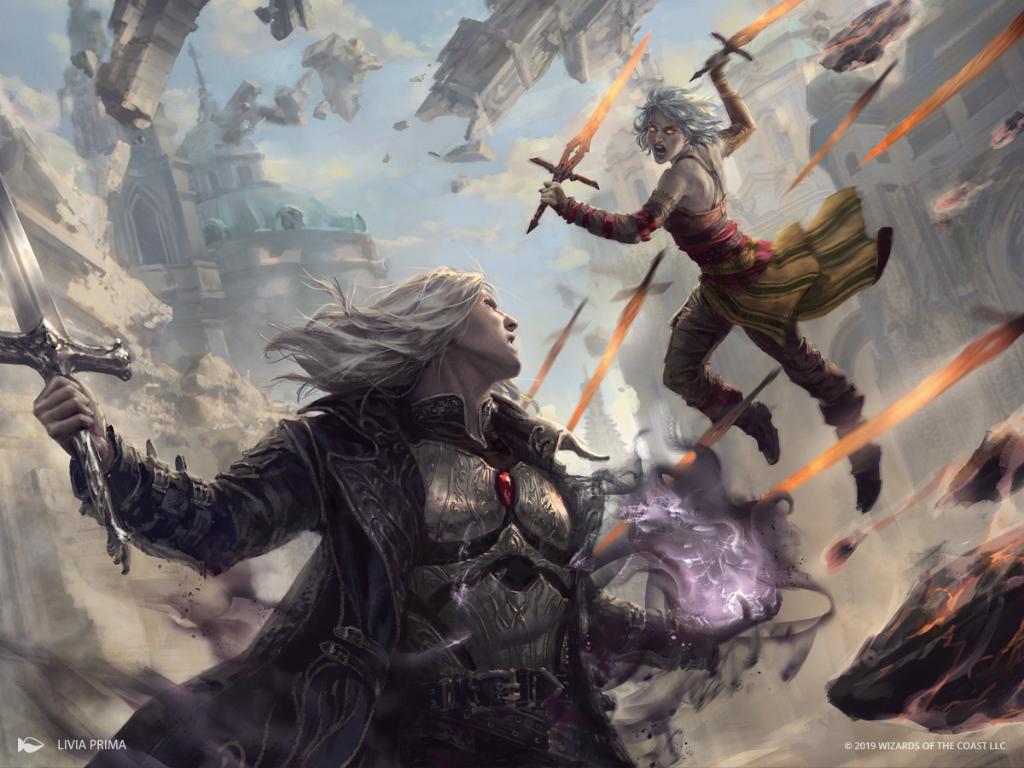



The Death Knight
By KylenBlaise
A Half-Pact Casting Knight
Death Knight
An elf in half-plate strides toward an orc warchief. His spear lashes out and keeps the orc distracted while his mount, a great wyrm of lightless scales, flies down to take the orc from behind.
A brass dragonborn sits in meditation as she focuses upon inscribing a new rune on her warhammer, which will grant her the edge in her upcoming battle.
Two heavily armored knights face off: one a half-orc bound by a Solar, the other an aasimar assassin of Asmodeus. Their weapons glow with runes of green fire, which flare with flashes of energy as they clash, each intent on their opponent's doom.
Death knights are attuned to death in an intimate manner. Each death knight has died, then been brought back to life by their patron. Sometimes these resurrections were part of a bargain struck, sometimes an act of necessity, sometimes as spite, and on rare occasions the long deceased are brought back to serve a new purpose. The ritual used to create death knights is taxing upon the patron, but each one is a powerful avatar, whether they are willing or not.
Returned from Death
The experience of being brought back to life is often a difficult one. Some suffered in their final moments, and the thought of reliving it can break some, resulting in an insane weapon for their patron to wield. Others have been returned from another era, and they must learn of the world that has passed them by as they lay in the ground. Whatever the cause of their death, one thing remains certain: a death knight is changed from their first life.
Warriors of their Patron
Death knights are created when an entity needs an enforcer. Whether they bargained for it or were forced into it, death knights serve as the hand of their patron. When there is a threat, they strike out. When there is an insult, a blade of necrotic magics corrects the slight.
Death knights are rare and meeting another is rarer still, but often, when two meet, it is with weapons drawn and spells ready. This is due to the wide range of patrons who create death knights. Oftentimes, the purpose of one is counter to the other, so it is rare for both parties to walk away unscathed from even a casual meeting.
Disciplined and Patient
As ones who have experienced death and usher others into its embrace, death knights learn that being at peace with one’s lot is important. The purest expression of this attribute is their rune-scribing. The focus and time needed to properly write a single rune is both soothing and demanding. The trance they enter to attune their focus and imbue their inks with the energy needed to inscribe a rune of power brings a tranquility that lets them cope with their nearness to death.
Creating a Death Knight
As you design a death knight, contemplate how they became a servant of their patron. Was it a mutual agreement? Was it for revenge? Or was it a deception? Consider how they act on their patron’s behalf. Do they act as a proper knight, or are they a scoundrel, doing as they wish until their next objective?
Quick Build
You can make a death knight quickly by following these suggestions, First, Strength or Dexterity should be your highest ability score, followed by Charisma. Second, choose the soldier background
Patron
Each death knight has a patron; they determine the goals and targets for their death knight.
Patrons Table
| d6 | Patron |
|---|---|
| 1 | Fiend |
| 2 | Fey |
| 3 | Celestial |
| 4 | Great Old One |
| 5 | Deity |
| 6 | Dragon |
Manner of Death, Circumstances of Resurrection
The variety of ways beings can die is staggering. Each one unique in time and circumstance, and it can cause their return to life to be complicated. This can be as simple as getting used to a new era, or as complicated as dealing with the consequences of your previous lifetime.
Manner of Death, Circumstances of Resurrection Table
| d6 | Manner of Death, Circumstances of Resurrection |
|---|---|
| 1 | You were executed as a traitor to your country, and you were returned to life to save it, though they could very well kill you again. |
| 2 | Once a war hero who died in battle, you have returned after more than a century and feel out of place. |
| 3 | You made a bargain to become a death knight and chose to drift into servitude with a cup of nightshade tea. You awaken moments later filled with new power. |
| 4 | You were murdered by a corrupt lord, and your patron granted you the ability to seek justice. |
| 5 | You were a paladin in life but were returned to serve your archnemesis. You cannot refuse, but you seek to take them down. |
| 6 | You were a criminal brought to the noose. Now, you are a criminal with powers from beyond the grave. You shall have your vengeance. |
The Death Knight
| Level | Proficiency Bonus | Features | Spells Known |
Spell Slots |
Slot Level |
Necrotic Strike Damage (Uses) |
Inscribed Runes |
|---|---|---|---|---|---|---|---|
| 1st | +2 | Rune Weapon, Knightly Order | — | — | — | — | — |
| 2nd | +2 | Fighting Style, Pact Magic, Necrotic Strike | 2 | 1 | 1st | 1d10 (2) | — |
| 3rd | +2 | Rune Scribe | 3 | 2 | 1st | 1d10 (2) | 1 |
| 4th | +2 | Ability Score Improvement | 3 | 2 | 1st | 1d10 (2) | 1 |
| 5th | +3 | Extra Attack | 4 | 2 | 2nd | 2d10 (3) | 1 |
| 6th | +3 | Order Feature | 4 | 2 | 2nd | 2d10 (3) | 1 |
| 7th | +3 | Knightly Discernment | 5 | 2 | 2nd | 2d10 (3) | 2 |
| 8th | +3 | Ability Score Improvement | 5 | 2 | 2nd | 2d10 (3) | 2 |
| 9th | +4 | — | 6 | 2 | 3rd | 2d10 (4) | 2 |
| 10th | +4 | Order Feature | 6 | 2 | 3rd | 2d10 (4) | 2 |
| 11th | +4 | Greater Necrotic Strike | 7 | 2 | 3rd | 3d10 (4) | 3 |
| 12th | +4 | Ability Score Improvement | 7 | 2 | 3rd | 3d10 (4) | 3 |
| 13th | +5 | — | 8 | 2 | 4th | 3d10 (5) | 3 |
| 14th | +5 | Disciplined Mind and Body | 8 | 2 | 4th | 3d10 (5) | 3 |
| 15th | +5 | Order Feature | 9 | 2 | 4th | 3d10 (5) | 4 |
| 16th | +5 | Ability Score Improvement | 9 | 2 | 4th | 3d10 (5) | 4 |
| 17th | +6 | — | 10 | 2 | 5th | 4d10 (6) | 4 |
| 18th | +6 | Order Feature | 10 | 2 | 5th | 4d10 (6) | 4 |
| 19th | +6 | Ability Score Improvement | 11 | 2 | 5th | 4d10 (6) | 5 |
| 20th | +6 | Avatar of Death | 11 | 2 | 5th | 4d10 (6) | 5 |
Rival
Death knights rarely live long without creating enemies. It is part of the job, but some become more than an enemy. They may be a thorn in your side or perhaps a tool to measure your own growth.
Rivals Table
| d6 | Rival |
|---|---|
| 1 | A paladin who feels they must constantly try to thwart you. |
| 2 | A fellow death knight serving your patron's arch nemesis. You will never have peace as long as they draw breath. |
| 3 | A noble escaped you and is constantly sending assassins to kill you while they hide. |
| 4 | A warrior of unmatched skill bested you. You now seek to surpass him, not to kill them, but to prove to them and yourself that you are the better fighter. |
| d6 | Rival |
|---|---|
| 5 | A mage, who aided in your demise so your patron could have you, reminds you of their power at every opportunity. |
| 6 | An assassin who intentionally tries to kill your targets before you, and they do so just to get on your nerves. |
Class Features
As a death knight, you gain the following class features
Hit Points
- Hit Dice: 1d10 per death knight level
- Hit Points at 1st Level: 10 + your Constitution modifier
- Hit Points at Higher Levels: 1d10 (or 6) + your Constitution modifier per death knight level after 1st
Proficiencies
- Armor: All armor, shields
- Weapons: Simple and Martial weapons
- Tools: Calligrapher's supplies
- Saving Throws: Constitution, Charisma
- Skills: Choose two from Arcana, Athletics, Animal Handling, Deception, Intimidation, Persuasion, Survival
Equipment
You start with the following equipment, in addition to the equipment granted by your background:
- (a) A martial weapon and a shield, or (b) two martial weapons
- (a) leather armor, or (b) scale mail, or (c) chain mail
- (a) Dungeoneer's pack, or (b) Explorer's pack
- Calligrapher's supplies and 4 javelins
Multiclassing
Prerequisites. To multiclass into or out of the death
knight class, you must meet these prerequisites:
Strength or Dexterity 13 and Charisma 13
Proficiencies. When you multiclass into the death knight class, you gain the following proficiencies: light and medium armor, shields, all simple and martial weapons, and calligrapher's supplies.
Pact Magic. If you multiclass into or out of Warlock,
you calculate your spell slots using the method below:
Your Pact Magic is not split, instead you add your
warlock levels and half of your death knight levels
(rounded down), the total combined level is then used to determine spell slots as written on the warlock class table.
Rune Weapon
As a death knight, your weapon is your calling card.
No matter its form, you can imbue it with a measure
of your power, which in turn empowers yourself. Over the course of a short rest, you can inscribe runes of necrotic energy upon up to two weapons. The runes glow with a green-white fire and mark it as your own.
While wielding a rune weapon, you cannot be disarmed unless you are incapacitated, and as long as you have at least one rune weapon, you age at the rate of 1 year for
every 10 years that passes. Additionally, if the
weapon is on the same plane of existence, you can summon
it to your hand as a bonus action.
You can have up to two rune weapons at once. If you
imbue a third rune weapon, you must choose one of
the other two to lose its power.
Knightly Order
Upon becoming a Death Knight, you join an order of
knights that shape your methodology for handling
situations in and out of combat. You may choose the order that best fits your philosophy on matters of conflicts. Each order has an extraplanar place to train in the art of being a death knight.
Your order grants features at 1st level, and again at 6th, 10th, 15th, and 18th level.
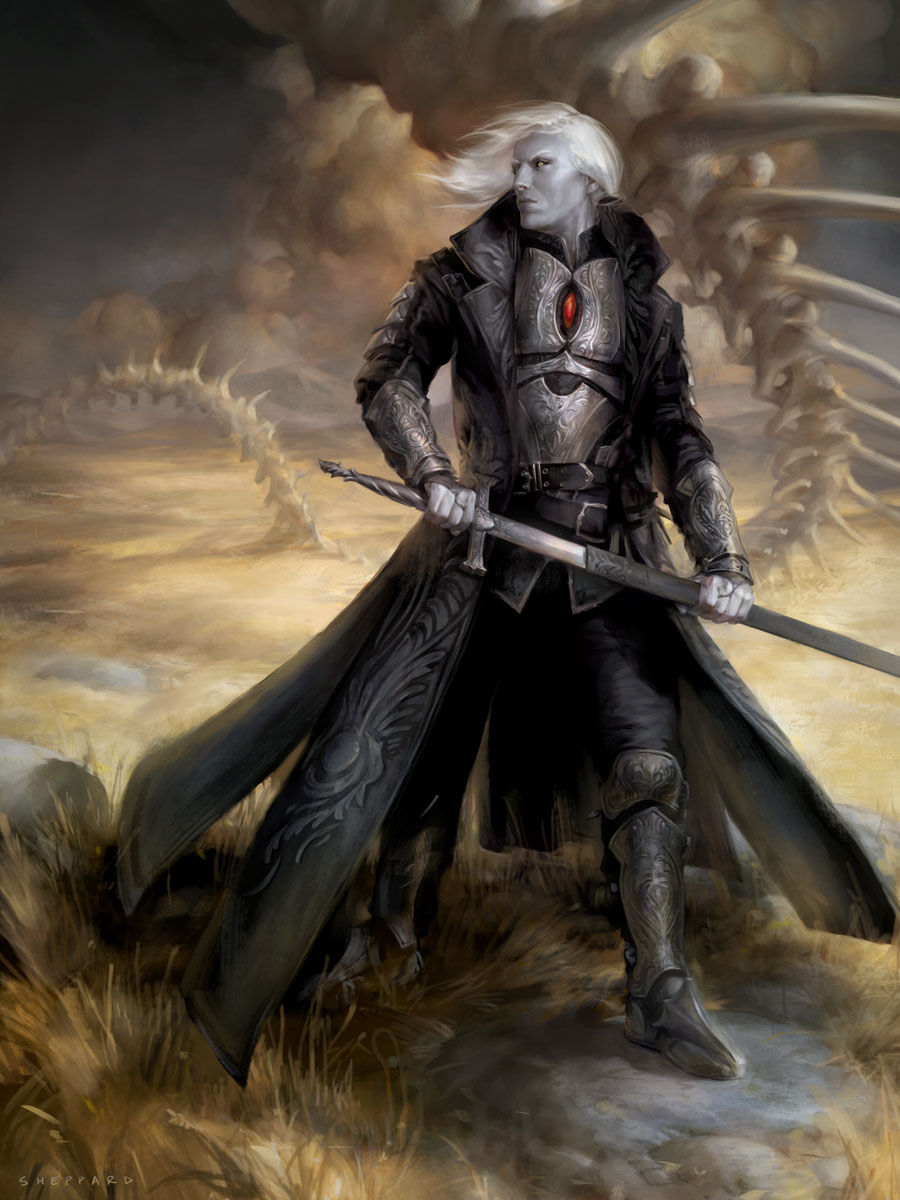


















- Order of Cavaliers
- Order of Destroyers
- Order of Ebon Blades
- Order of Magi
- Order of Rune Warden
- Order of Reapers
- Order of Fallen Paladins (Appendix B)
Fighting Style
Starting at 2nd level, you adopt a particular fighting style as your specialty. Choose one of the following options. You can't take a Fighting Style more than once, even if you later get to choose again.
Defense
While you are wearing armor, you gain a +1 bonus to AC.
Dueling
When you are wielding a melee weapon in one hand and no other weapons, you gain a +2 bonus to damage rolls with that weapon.
Great Weapon Fighting
When you roll a 1 or 2 on a damage die for an Attack you make with a melee weapon that you are wielding with two hands, you can reroll the die and must use the new roll, even if the new roll is a 1 or a 2. The weapon must have the Two-Handed or Versatile property for you to gain this benefit.
Two-Weapon Fighting
When you engage in two-weapon fighting, you can add your ability modifier to the damage of the second Attack.
Pact Magic
By 2nd level, your patron's hand in returning you to life grants you pact magic and allows you to cast death knight spells.
Spell Slots
The death knight leveling table shows how many spell slots you have. The table also shows what the level of those slots is; all of your spell slots are the same level. To cast one of your death knight spells of 1st level or higher, you must expend a spell slot. You regain all expended spell slots when you finish a short or long rest.
Spells Known of 1st Level and Higher
At 2nd level, you know two 1st level spells of your choice from the death knight spell list. The Spells Known column of the death knight table shows when you learn more death knight spells of your choice of 1st level and higher. A spell you choose must be of a level no higher than what's shown in the table's Slot Level column for your level.
Additionally, when you take a long rest you can choose to sacrifice hit dice that you would regain in order to remove a spell you know and replace it with another spell from the death knight spell list, which also must be of a level for which you have spell slots. Spells cost 1 hit die per level to replace them; the cost is based on the new spell known.
Spellcasting Ability
Charisma is your spellcasting ability for your death knight spells. You use your Charisma whenever a spell refers to your spellcasting ability. In addition, you use your Charisma modifier when setting the saving throw DC for a death knight spell you cast and when making an attack roll with one.
Spell Save DC = 8 + your proficiency bonus +
Spell attack modifier = your proficiency bonus +
Spellcasting Focus
You use your rune weapon as a spellcasting focus for your spells.
Necrotic Strike
At 2nd level, you can wreath your weapon with deadly power drawn from your runes. When you hit a creature with a melee weapon attack using a rune weapon, you can cause green-white fire to erupt, dealing an additional 1d10 necrotic damage. You can use this feature twice per long rest. The damage dealt and number of uses per long rest increase with your death knight level as shown on the Necrotic Strike Damage (Uses) column of the death knight table.
You regain all uses of Necrotic Strike at the end of a long rest.
Rune Scribe
Starting at 3rd level, you learn to ritualistically imbue your weapons and armor with runes of power. These special runes add unique features allowing death knights to be more adaptable. The ritual takes two hours per rune of power inscribed, and you can change a previously inscribed rune to a different one over the course of one hour. Once a rune of power has been inscribed, you must complete a long rest in order for the magic to take effect, and only you can benefit from inscribed runes.
You can only have a number of inscribed runes equal to the amount shown on the Inscribed Runes column of the death knight table. A list of runes is provided at the end of this document.
By 6th level, your rune scribed weapons are infused with enough magic to act as a magical weapon. If you break your connection with a rune scribed weapon, the runes of power fade, and, if it was a non-magical weapon, it ceases to act as a magical weapon.
Ability Score Improvement
When you reach 4th level, and again at 8th, 12th, 16th, and 19th level, you can increase one ability score of your choice by 2, or you can increase two ability scores of your choice by 1. As normal, you can't increase an ability score above 20 using this feature.
Extra Attack
Beginning at 5th level, you can attack twice, instead of once, whenever you take the Attack action on your turn.
Knightly Discernment
Your training and magics have granted you greater awareness of your surroundings and the beings inhabiting them. At 7th level, you gain proficiency with your choice of insight or perception. If you are already proficient with both, choose another skill from the death knight skill list.
Additionally, when you make a Wisdom (perception) or a Wisdom (insight) check, you can add your Charisma modifier to the total once per short or long rest.
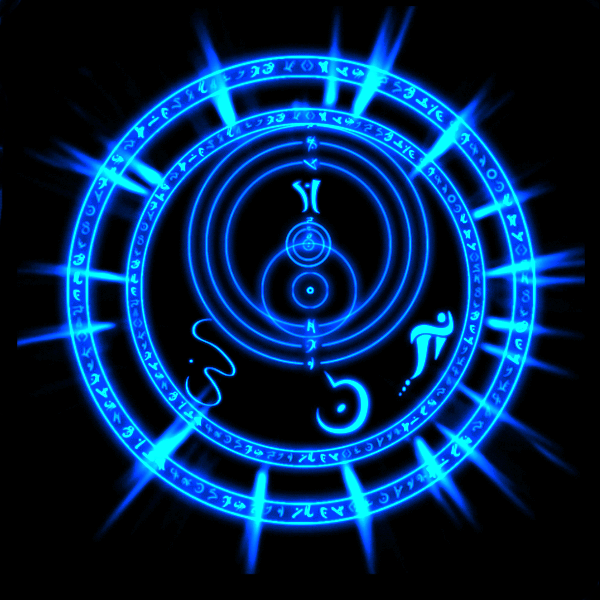


Greater Necrotic Strike
At 11th level, you are capable of drawing out more power from your rune weapon. The damage dealt by necrotic strike ignores resistance to Necrotic damage and treats immunity as resistance by drawing energy off of such beings rather than directly damaging them.
Additionally, once per long rest, when you roll initiative and have no uses of necrotic strike, you regain 1 use.
Disciplined Mind and Body
At 14th level, you have transcended the need for extensive sleep. You only need to sleep for half the time to benefit from a long rest and may spend the rest of the time doing light activity such as reading, keeping watch, or rune scribing.
Avatar of Death
At 20th level, once per long rest, as an action, you can become an Avatar of Death for one minute. While in this form, you gain resistance to all damage types, and you cannot be charmed or frightened. Your movement speed is doubled, and you are unaffected by both magical and non-magical difficult terrain.
Knightly Orders
Order of Cavaliers
In Ysgard, the cavaliers train to become warriors of honor and valor. The Mithril Citadel, the sprawling castle of the cavaliers, is the center of their training. Here they learn to bond with the beasts they can summon and are trained in the best tactics to employ with their loyal ally.
Bound Mount
When you become a cavalier, as
a 1 hour ritual, you can summon a mount.
While you ride your mount, you can take the
dash action as a bonus action. If you are not
riding your mount in combat, it moves on your
turn, and you can spend a bonus action to
command it to take an action.
Your mount has the statistics of a riding horse or another CR 1/4 creature that can be ridden (at your DM's discretion), though it is a celestial, fey, or undead (your choice) instead
of its normal type, and if your mount has an Intelligence of 5 or less, its Intelligence becomes 6, and it gains the ability to understand any language that you speak; you can also communicate with it telepathically as long as it is on the same plane of existence as you.
Your mount also uses your proficiency bonus instead of its own, and it has a bonus to its Hit Points equal to twice your death knight level. Additionally, while on your mount, you can make any spell you cast that targets only you also target your mount.
At 5th level you can alter its form and statistics to that of a war horse or another creature of CR 1/2 or less that can be ridden. The limit increases to CR 1 at 9th level and CR 2 at 13th level.
Knightly Demeanor
At 1st level, your training as a cavalier imparts a refined air to your countenance.
You can give yourself advantage on Charisma (intimidation) checks a number of times equal to your Charisma modifier per long rest. You regain all uses of this feature at the end of a long rest.
Skilled Rider
At 6th level, you become a dangerous foe to face while mounted. While you are mounted and are not incapacitated, you gain the following benefits:
- While mounted, you have immunity to the surprised condition.
- You gain proficiency with Animal Handling, or if you are already proficient, you can choose a skill from the death knight skill list and gain proficiency with it.
- You have advantage on checks to stay mounted against non-magical and magical effects.
Cavalier Variant Rules
Skilled Rider Variant
If your campaign does not allow feats, you can choose to gain the following benefits instead of the normal Skilled Rider features:
- You have advantage on melee attack rolls against any unmounted creature that is smaller than your mount.
- You can force an attack targeted at your mount to target you instead.
- If your mount is subjected to an effect that allows it to make a Dexterity saving throw to take only half damage, it instead takes no damage if it succeeds on the saving throw, and only half damage if it fails.
Alternate Mounts
If your DM approves, instead of summoning a creature, you can attempt to tame a creature you meet in your travels. The DM can choose to require Animal Handling checks to succeed. In this case, you must complete an hour long bonding ritual with the creature. Creatures bonded in this way could potentially exceed the standard CR limits at the DM's discretion.
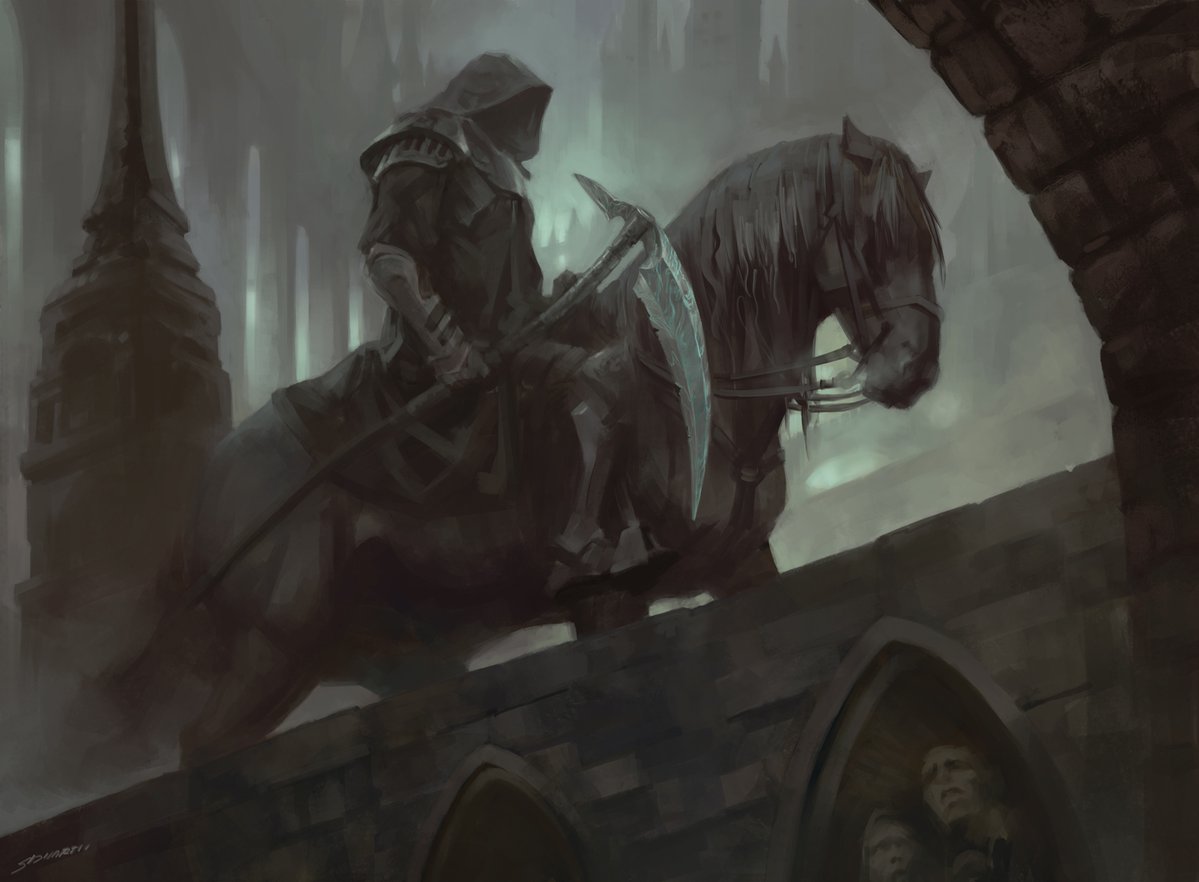

Courtly Aptitude
At 10th level, your extensive experience has made you a superior diplomat. When you make a Charisma (persuasion) check or an Intelligence (history) check, your proficiency bonus is doubled.
Combat Instincts
Upon reaching 15th level, your summoned mount has become just as much of a force on the battlefield as you have. Any of your bound mounts gain instincts honed to the point that you have advantage on initiative rolls atop your mount.
Additionally, you can now telepathically direct your mounts to take actions (no action required).
Dragonkin Mount
At 18th level, when you use your bound mount feature, you can now summon a Shadow Wyrm Mount (stats at the end of the list of runes). Alternately, you can summon a Nightmare or another CR 3 creature that can be ridden.
Order of Destroyers
One of two sister orders, the destroyers have the entrance to their headquarters in Avalas, first layer of the plane Acheron. Through a rift accessible only to death knights and their patrons, lies the Adamant Bastion where the destroyers become truly terrifying warriors that focus on strength above all else.
Evoke Fear
Your training as a destroyer has imparted the ability to cause even the most stalwart to cower before you. You can give yourself advantage on Charisma (intimidation) checks a number of times equal to your Charisma modifier per long rest and regain all uses of this feature at the end of a long rest.
Close the Gap
At 1st level, when you take the attack action, you gain an additional 5 feet of movement. You can use this movement before or after making your first attack.
The additional movement increases to 10 feet
at 6th level and 15 feet at 15th level.
Savage Techniques
At 6th level, when you hit with a melee weapon
attack using your Strength modifier, you can
attempt to brutalize an opponent and beat them
down with power and fear. You can use savage
techniques a number of times equal to your
Charisma modifier per long rest.
- Batter. The target creature must make a
Strength saving throw against your Spell
Save DC or be knocked prone.
- Battle Cry. You let loose a primal scream and strike fear into your opponent. The target creature must make a Wisdom saving throw against your Spell Save DC. On a failure, they become frightened of you until the end of its next turn.
- Break the Gate. The target creature must make a Constitution saving throw against your Spell Save DC. On a failure, the target creature has -2 penalty to its AC until the end of its next turn. Break the Gate does not stack.
Imbued Physique
At 10th level, your training grants you enhanced physical capabilities and a more sinister aspect. When you make a Strength (athletics) or Charisma (intimidation) check, your proficiency bonus is doubled.
Improved Savage Techniques
By 15th level, you have learned to perform superior versions of your Savage Techniques.
- War Cry. Creatures targeted by Battle Cry make the Wisdom saving throw at disadvantage.
- Shatter the Gate. Break the Gate now causes them to also have a -2 penalty to all saving throws until the end of their next turn.
- Overwhelm. When the target of Batter is one size larger than you or smaller, they are knocked prone and cannot make a save against it.
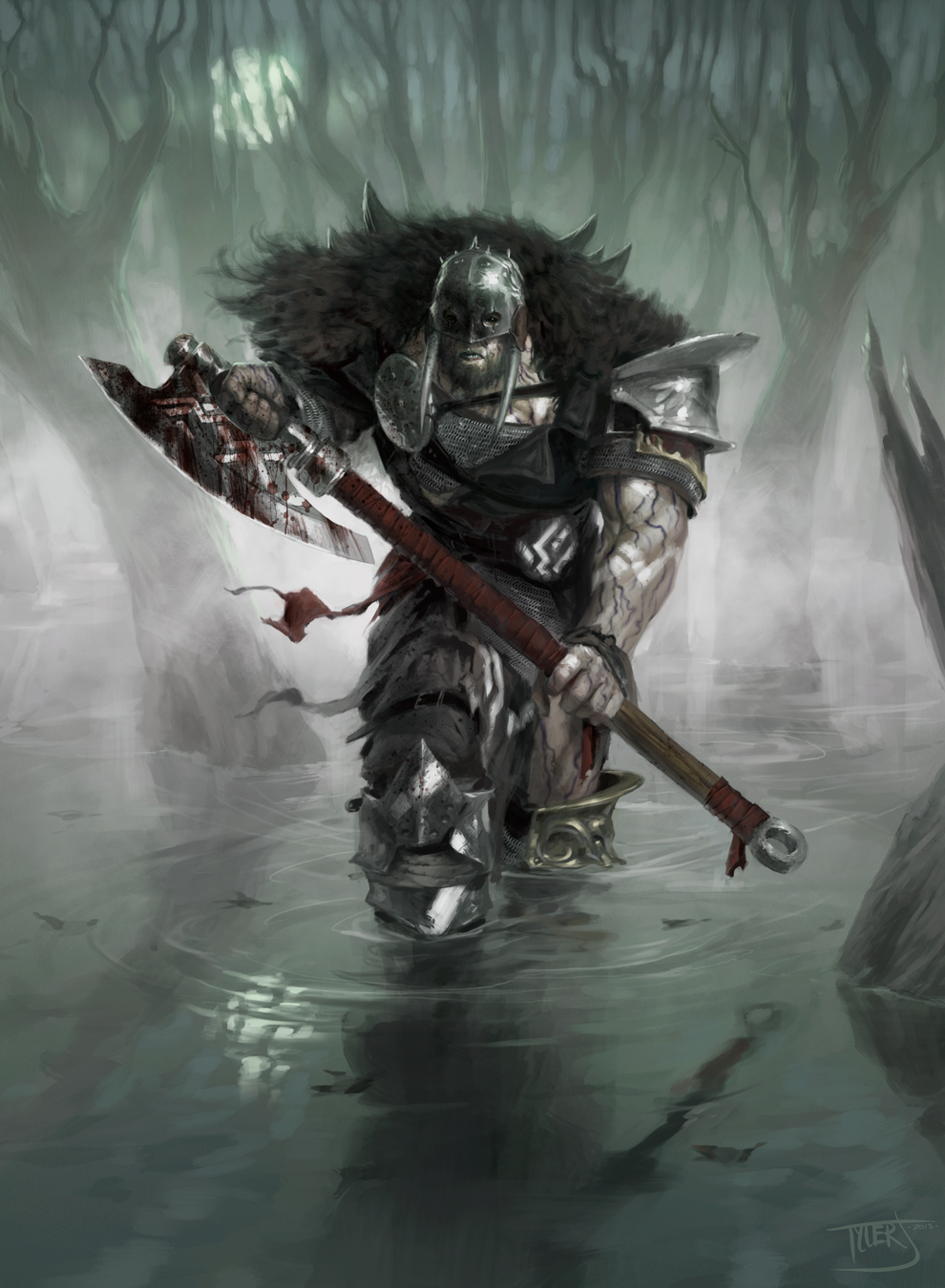



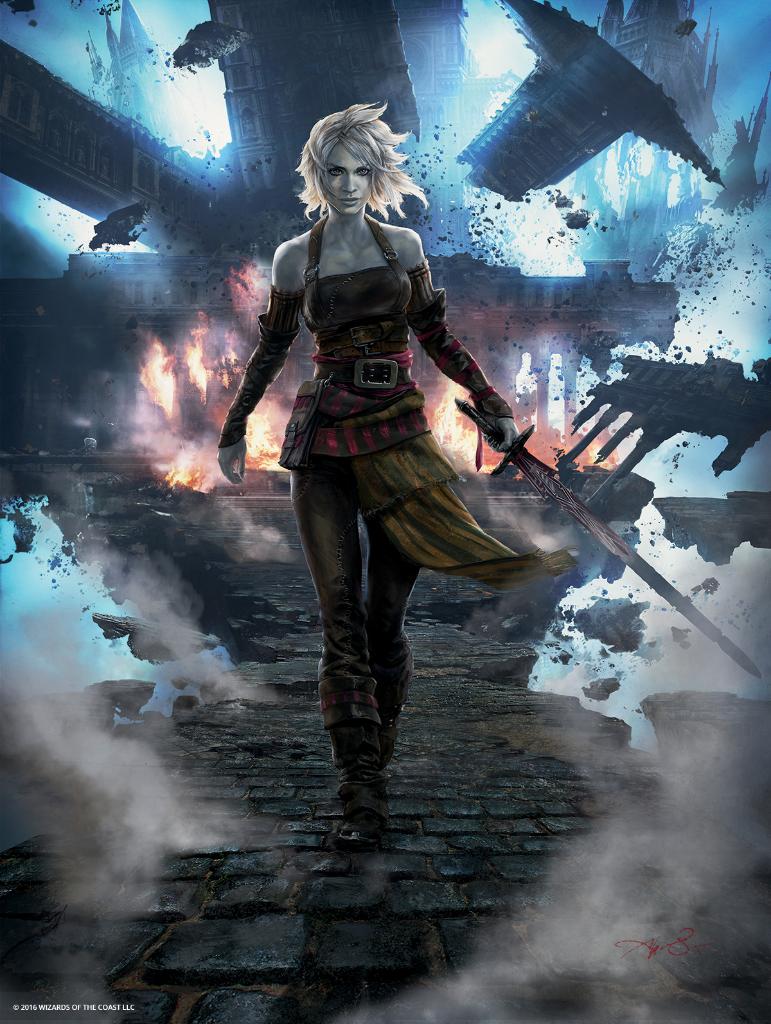











Channeled Power
At 18th level, you learn to temporarily enhance your muscles with magic. As a bonus action, you can increase your Strength score by an amount equal to your Charisma modifier for 1 minute. This enhancement can take your strength above 20, but it cannot exceed 30. If your Strength score is set by a Magic Item, this feature does not increase the set amount, instead increasing your natural Strength score, and you use whichever is higher.
While your channeled power is active, you can use your Savage Technique feature once per turn without expending a use.
You can use this feature once per long rest.
Order of Ebon Blades
The second sister order, the ebon blades have the entrance to their headquarters in the first layer of the plane Acheron, Avalas. Through a rift accessible only to death knights and their patrons, lies the Adamant Bastion where ebon blades undergo their transformation from a mere swordsman to a swordmaster whose skill is unrivaled.
Empowered Acrobat
Your training as an ebon blade has imparted the ability to perform greater feats of acrobatics. When you make a Dexterity (acrobatics) check you can give yourself advantage a number of times equal to your Charisma modifier per long rest and regain all uses of this feature at the end of a long rest.
Ebon Armaments
At 1st level, you learn to use weapons with skill beyond the grasp of others. Choose up to two types of melee weapons to become ebon armaments, you can use Dexterity for attack and damage rolls while using them, even if it does not have the finesse property.
At 10th and 15th level, you can select an additional weapon type to become an ebon armament.
Weapon Arts
At 6th level, you gain an additional way to use your ebon armaments. You learn the following weapon arts and can use them when you wield the appropriate weapon. You can use weapon arts a number of times equal to your Charisma modifier per long rest.
- Blade Swarm. When you miss an attack using an ebon armament when engaging in two-weapon fighting, you can make a second attack as part of the same bonus action.
- Cripple. When you hit with an attack while wielding an ebon armament in one hand and no other weapons, you can attempt to slow an enemy. The target creature must make a Constitution saving throw against your Spell Save DC. On a failure, the target creature's movement speed is reduced by half until the end of its next turn.
- Reaping Swipe. Before you make an attack with a two-handed ebon armament, you can choose to make it a cleaving attack. Make a single attack roll against a target creature. On a hit, if the total is greater than or equal to the AC of a second creature within your melee attack range, the second creature takes damage equal to half the damage dealt to the first creature.
Superior Awareness
At 10th level, your training results in a state of pure physical and mental focus, ensuring you do not get surprised. When you make a Dexterity (acrobatics) check or a Wisdom (perception) check, your proficiency bonus is doubled.
Improved Weapon Arts
At 15th level, you have improved upon your skills with weapons.
- Improved Blade Swarm. When you use this feature to make a second attack, you gain advantage on the second strike.
- Improved Cripple. When you use this feature, on a failed save, the target creature is knocked prone.
- Improved Reaping Swipe. When you use this feature, you can target a third creature.
Undying Swordsman
Starting at 18th level, if you take damage that would reduce you to 0 hit points but does not kill you outright, you can move up to your walking speed and make a single melee weapon attack. On a hit, you regain hit points equal to the damage dealt.
You can use this feature once per long rest.
Order of Magi
The Umbra Spire, headquarters of the magi located in the Shadowfell, is a place of arcane learning and deadly intrigue. The location within the Shadowfell is ever shifting, and part of one's initiation is to find it before the natives find you, and of those who do only those of great wit can survive the machinations of the masters and students of the spire.
Keeper of Secrets
At 1st level, as a result of your training, hiding the truth has become second nature. You can give yourself advantage on Charisma (deception) checks a number of times equal to your Charisma modifier per long rest. You regain all uses of this feature at the end of a long rest.
Expanded Spell list
You learn additional spells when you reach certain levels in this class, as shown in the Magi Spells table. The spell counts as a death knight spell for you, but it doesn't count against the number of death knight spells you know.
Magi Spells
| Death Level | Spells |
|---|---|
| 2nd | False Life, Ray of Sickness |
| 5th | Blindness/Deafness, Ray of Enfeeblement |
| 9th | Life Transference, Vampiric Touch |
| 13th | Blight, Shadow of Moil |
| 17th | Danse Macabre, Negative Energy Flood |
Mage Adept
When you choose this order at 1st level, you can learn cantrips from the Magi Spell list. At 1st level, you choose two cantrips. At 10th level you can learn one additional cantrip.
Additionally, you can cast the spell find familiar as a ritual, but you can only use it to create a crawling claw. This spell does not count toward your spells known.
Initiate Necromancer
At 6th level, once per long rest, you can cast the spell Animate Dead at 3rd level without expending a spell slot. At 10th level, you cast it as a 4th level spell, and at 15th level, it is cast at 5th level.
Additionally, undead you control use your proficiency bonus for attack rolls and add it to their AC.
Forbidden Lore
At 10th level, you have unlocked many secrets of the multiverse. When you make an Intelligence (arcana) check or an Intelligence (religion) check, your proficiency bonus is doubled.
Adept Necromancer
At 15th level, undead you create gain the following benefits:
- Your undead minions are created with temporary hit points equal to your death knight level
- Your undead minions weapon attacks score a critical hit on a roll of 19 or 20.
- Your undead minions weapon attacks deal additional necrotic damage equal to your proficiency bonus.
Master Necromancer
At 18th level, once per long rest, you can cast Create Undead at 6th level without expending a spell slot.










Order of Rune Wardens
Rune Wardens learn their arts at the Solemn Glade, a hidden sanctum deep within the Feywild. There they learn to empower not just their weapons, but their body. They tattoo runes and artistic ley lines upon themselves to attune their bodies to runic energy more thoroughly than the members of any other order.
Rune Forged
As a rune warden, you have undergone a ritualistic tattooing that has permanently altered your body, and you can choose one rune from the list of runes to be tattooed upon your back. This rune does not count against your number of inscribed runes, but it can only be changed when you gain a level in the death knight class.
Rune Giver
At 6th level, you learn to temporarily grant an ally a rune. During a long rest, you can spend 2 hours to rune scribe an ally's weapon. Choose a rune from the death knight rune
list that does not have a level or subclass prerequisite to scribe onto an ally's weapon. If the rune normally has
more than one use, it only has one use when
inscribed this way, and it only lasts until the end of
the next long rest.
You can use this feature once per long rest.
Improved Rune Weapon
By 10th level, you can use a bonus action to will
your rune weapons to give off bright light for 20 feet
and dim light for another 20 feet. Objects and
creatures within the bright light are seen as if under
the effects of detect magic. You can dismiss the light
at will. If your rune weapon leaves your hand,
it will cease to give off the light.
Rune Lore
At 10th level, your study of runes has resulted in an
expanded knowledge of ancient civilizations.
When you make an Intelligence (history) check,
your proficiency bonus is doubled.
Improved Rune Scribe
By 15th level, your hours of practice and dedication to the
art has resulted in your ability to inscribe runes more efficiently. You have learned to halve the time it takes
to rune scribe, including the time it takes for your rune giver feature.
Greater Rune Giver
At 15th level, when you use your rune giver feature, you
can give up to two runes to one ally or one rune to
two allies.
Runic Recharge
At 18th level, you can use an action to recharge a single use
of a rune that you have expended.
You can use this feature once per long rest.
Order of Reapers
Unlike other orders who have a secret castle or hidden sanctum, the Reapers have a stone table that sits upon the fields of the Shadowfell. Those who wish to enlist must bring a monster of the plane to the table. From there, they are sent a master. Together, the master and student survive upon the Shadowfell as hunters. Honing their stealth until they can move freely without being caught by the natives, killing them before they can fight back.
Rune Sniper
As a Reaper, you have learned to use your rune weapon feature on ranged weapons, and you also add the archery and thrown weapon fighting styles to the list of death knight fighting styles.
Additionally, when you reach 2nd level, you can use your Necrotic Strike feature with a ranged or thrown rune weapon.
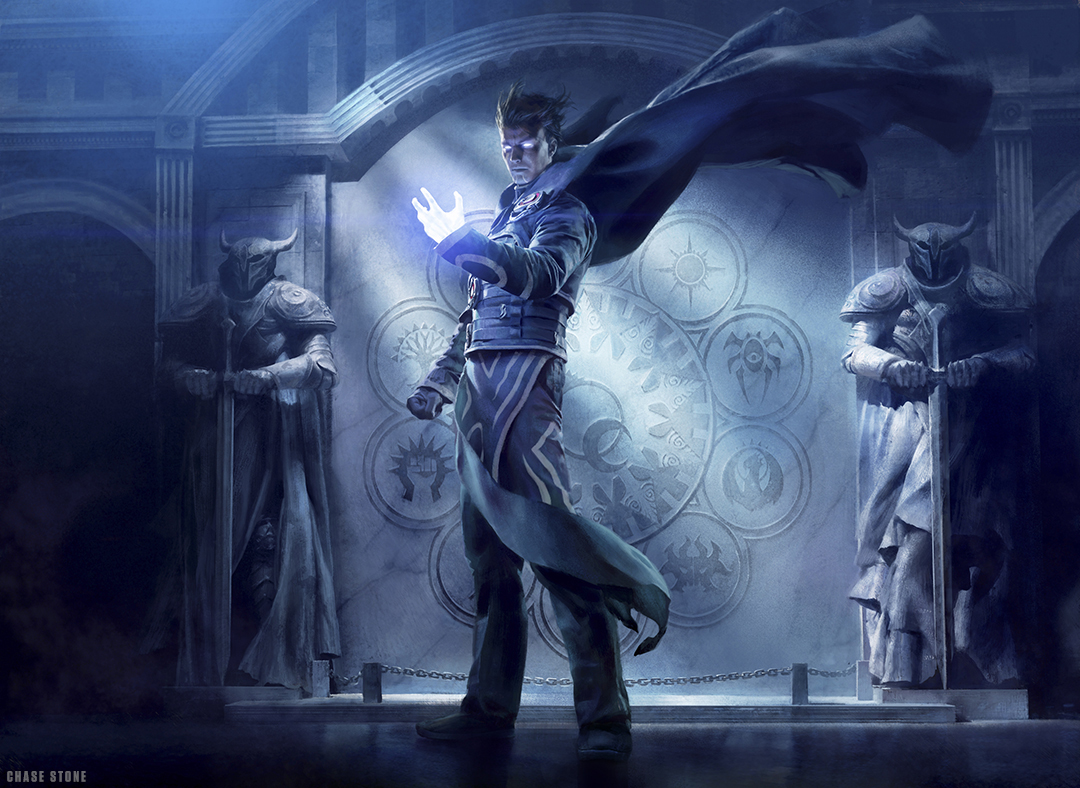






Lethal Critical
At 6th level, you can amplify the effect of your Necrotic Strike when you land a critical hit. When you get a critical hit and use your Necrotic Strike feature with a ranged or thrown weapon, you can roll an additional 1d10 necrotic damage when determining the extra damage for a critical hit. At 15th level this increases to 2d10 necrotic damage.
Shadow Step
At 10th level, when you hit a creature with a ranged or thrown weapon attack and use your necrotic strike feature, you can use your bonus action to teleport to a point within 30 feet of you that is in an area of dim light or darkness.
Improved Lethal Critical
At 15th level, when you roll a 19 on the die for a ranged or thrown weapon attack and use your necrotic strike feature, it becomes a critical hit.
Unseen Slayer
At 18th level, as an action, you can turn invisible for 10 minutes, without requiring concentration. Anything you are wearing or carrying is invisible as long as it is on your person.
You can use this feature once per long rest.





List of Runes
Some runes require a prerequisite to be met before they can be inscribed. Any rune that lists a level requirement refers specifically to death knight levels.
Rune of the Arcanist
Prerequisite: Order of Magi
You can add your Charisma modifier to the damage you deal with any magi cantrip, and you can learn one additional magi cantrip.
Rune of Arctic Strikes
When you use your Necrotic Strike feature, you can cause it to deal Cold damage. When you do so, the target creature must make a Constitution saving throw. On a failed save, the target's movement speed is halved until the end of your next turn.
Rune of Athleticism
As a bonus action, you can cast Jump or Longstrider on yourself without expending a spell slot.
You can use this rune a number of times per long rest equal to your Charisma modifier (minimum of 1).
Rune of the Clouds
This rune allows you to draw a shrouding mist around yourself. As an action, you create a 10ft radius circle of fog centered on yourself that follows you. The area around you is treated as heavily obscured, but you can see through it. The fog lasts for 1 minute, or until you dismiss it as a bonus action.
You can use this feature once per short or long rest.
Rune of the Crusader
You can use the necrotic energy of your runes to heal yourself. When you hit with a rune weapon and use your necrotic strike feature, you can roll a number of hit dice equal to your Charisma modifier and heal for the total rolled.
Hit dice used by this rune are expended, and you do not add your Constitution modifier to the amount healed.
You can only use this rune once per short or long rest.
Rune of Culling
Prerequisite: Order of Reapers; 9th level
When you use your lethal critical and improved lethal critical features, you can add an additional d10 to the damage
Rune of the Death Ward
Prerequisite: 13th level
When you take damage that would reduce you to 0 hit points, you instead drop to 1 hit point.
This rune can only be activated once per long rest.
Rune of Defense
Prerequisite: 13th level
Whenever you must make a saving throw, you gain a bonus to the saving throw equal to your Charisma modifier (with a minimum bonus of +1).
Rune of the Endless Harvest
Prerequisite: Order of Reapers
When you use this on a rune weapon with the thrown property, it causes the weapon to return to your hand after each attack. If a feature grants you more than one attack, you can use the same weapon to make all your attacks in the same turn.
When used on a rune weapon with the ranged property, you gain an unending supply of non-magical ammunition.
Rune of the Frozen Grasp
Once on each of your turns, when you hit a creature with a weapon attack, you can reduce that creature's speed by 10 feet until the end of your next turn.
Rune of the Gargoyle
Prerequisite: Order of Destroyers
When you take damage, you can use your reaction to roll a d12. Add your Constitution modifier to the number rolled and reduce the damage by that total.
You can use this rune once per short or long rest.
Rune of Hellfire
Prerequisite: 17th level
This rune allows you to hurl a magical ball of fire fueled with energies derived from your rune weapon.
As an action, you choose a point you can see within 120 feet. Each creature in a 20-foot-radius sphere centered on that point must make a Dexterity saving throw. The sphere spreads around corners. A creature takes 6d6 fire damage and 6d6 necrotic damage on a failed save, or half as much damage on a successful one.
You can use this rune once per long rest
Rune of the Inquisitor
Prerequisite: Order of Rune Wardens; 9th level
This rune allows you to gain insights into what you see. As an action, you can cast Identify. You can use this feature a number of times equal to your Charisma Modifier.
Rune of the Legendary Mount
Prerequisite: Order of Cavaliers; 13th level
This rune grants any creature created using your bound mount feature resistance to all damage, and when it deals damage, you can add your proficiency bonus to the damage dealt.
The additional damage is of the same type as the mount's attack, if the attack deals more than one type of damage, the damage bonus is applied to only one type. You choose which type.
Rune of Lethality
Prerequisite: 17th level
This rune lets you cause your enemies to whither under the effects of necrotic energy. You can use your reaction to cause a target creature to become vulnerable to a single instance of necrotic damage.
This rune can only be used once per short or long rest.
Rune of the Lightning Mount
Prerequisite: Order of Cavaliers; 9th level
While mounted, you can use your action to cast haste on yourself and your mount without expending a spell slot.
You can use this rune once per long rest.
Rune of Necrosis
Prerequisite: Order of Rune Wardens; 13th level
This rune imbues your weapon with more necrotic energy. You gain 1 additional use of your Necrotic Strike feature per long rest.
Rune of Necrotic Strike Mastery
When you use necrotic strike, and you roll a 1 or 2 for necrotic damage, you can reroll the dice once and take the second roll.
Rune of Pyre Strikes
When you use your Necrotic Strike feature, you can cause it to deal Fire damage. When you do so, the target creature must make a Constitution saving throw. On a failed save, the target takes an additional 1d10 fire damage at the beginning of its next turn.
Rune of Retribution
While this rune is inscribed, when you take damage from a creature within 60 feet of you, you can use your reaction to deal 3d10 necrotic damage to the creature that damaged you.
You can use this rune a number of times equal to a third of your death knight level (rounded down) per long rest.
Rune of the Owl
You gain darkvision and can see in dim light within 60 feet of you as if it were bright light, and in darkness as if it were dim light. You can't discern color in darkness, only shades of gray. If you already have darkvision, then your darkvision intervals increase by 60 feet.
You also have advantage on stealth checks while in darkness.
Rune of Parrying
Prerequisite: Order of Ebon Blades
As a reaction, you can add your proficiency bonus to your AC against one melee attack that would hit you. To do so, you must see the attacker and be wielding a melee weapon.
Rune of Shadow Melding
Prerequisite: Order of Reapers; 13th level
When you use your Shadow Step feature, you can now take the Hide action as part of the same bonus action.
Rune of Skill
You can use this rune to add your proficiency bonus to a skill you do not have proficiency in. This feature can be used before or after the roll, but it must be used before you know if it succeeds or fails.
This rune can only be used a number of times equal to your Charisma modifier per long rest.
Rune of the Slayer
Prerequisite: Order of Destroyers or Ebon Blades; 13th level
This rune lets you channel the death of an opponent into a surge of adrenaline. Once per turn, when you reduce an enemy creature to 0 hit points or score a critical hit, you can make an additional attack as part of that attack action.
Rune of Spellbinding
Prerequisite: Order of Magi; 13th level
This rune channels additional magical energy that can be used to fuel your powers. You gain 1 additional spell slot equal to the level of your other death knight spell slots.
Rune of Spellbreaking
Prerequisite: 9th level
You can use this rune to attempt to disrupt a spell. As a reaction to a creature within 30 feet of you casting a spell, you can cast counterspell without expending a spell slot, but regardless of the spell's level, you must make an ability check using your spellcasting ability. The DC equals 10 + the spell’s level. On a success, the creature’s spell fails and has no effect.
You can use this rune twice per long rest.
Rune of Spellstriking
Prerequisite: Order of Magi; 9th level
When you cast a spell, you can use a bonus action to make a spell attack with advantage, or you can impose disadvantage on the saving throw of a single creature affected by that spell.
You can use this rune a number of times equal to a quarter of your death knight level (rounded down) per long rest.
Rune of the Summoner
Prerequisite: Order of Cavaliers
You can use this rune to instantly bring your Bound Mount to your location. You can decide whether it appears next to you, or if it appears under you, allowing you to become instantly mounted.
If there is not enough room for your mount, the summoning fails, and your mount takes 4d6 force damage.
You can use this rune once per short or long rest.
Rune of Toxic Strikes
When you use your Necrotic Strike feature, you can cause it to deal Poison damage. When you do so, the target creature must make a Constitution saving throw. On a failed save, the target is poisoned until the end of your next turn.
Rune of the True Warden
Prerequisite: Order of Rune Wardens
This rune activates the leylines in your body to create a matrix of defensive energies around you. While you are not wearing any armor, your armor class equals 10 + your Dexterity modifier + your Charisma modifier. You can use a shield and still gain this benefit.
Rune of Unbridled Savagery
Prerequisite: Order of Destroyers; 9th level
You regain all uses of your savage techniques on a short or long rest.
Rune of the Weapon Master
Prerequisite: Order of Ebon Blades; 9th level
You regain all uses of your weapon arts on a short or long rest.
Shadow Wyrm Mount
Large dragon, unaligned
- Armor Class 17 (natural armor)
- Hit Points 58 (5d10 + 15)
- Speed 30 ft., fly 60 ft.
STR DEX CON INT WIS CHA 19 (+4) 14 (+2) 17 (+3) 6 (-2) 12 (+1) 6 (-2)
- Damage Immunities Necrotic
- Senses Blindsight 10 ft., Darkvision 120 ft., Passive Perception 17
- Saving Throws Str +7, Dex +5, Con +6
- Skills Perception +7, Stealth +8
- Languages Can understand any language spoken by its master
- Challenge 3 (700 XP)
One with Shadow. When in dim light or darkness, this creature has advantage on stealth checks Shadow Stealth. While in dim light or darkness, the dragon can take the Hide action as a bonus action.
Actions
Multiattack. The dragon makes two attacks: one with its bite and one with its claws.
Bite. Melee Weapon Attack: +7 to hit, reach 5 ft., one target. Hit: 9 (1d10 + 4) piercing damage and 2 (1d4) necrotic damage.
Claw. Melee Weapon Attack: +7 to hit, reach 5ft., one target. Hit 7 (1d6 + 4)
Shadow Breath (1/long rest). The dragon exhales shadowy fire in a 20-foot cone. Each creature in that area must make a DC 16 Dexterity saving throw, taking 33 (6d10) necrotic damage on a failed save, or half as much damage on a successful one.
Death Knight Spell List
1st level
- Armor of Agathys
- Arms of Hadar
- Bane
- Cause Fear
- Command
- Compelled Duel
- Detect Evil and Good
- Dissonant Whispers
- False Life
- Heroism
- LifewardDeath Knight
- Ray of Sickness
- Searing Smite
- Thunderous Smite
- Wrathful Smite
2nd level
- Crown of Madness
- Darkness
- Enthrall
- Gentle Repose
- Hold Person
- Magic Weapon
- Mind Spike
- Phantasmal Force
- Protection from Poison
- Ray of Enfeeblement
- Rime's Binding Ice
- Shatter
- Wither and Bloom
3rd level
- Bestow Curse
- Elemental Weapon
- Enemies Abound
- Fear
- Feign Death
- Hunger of Hadar
- Life Transference
- Remove Curse
- Revivify
- Speak with Dead
- Summon Shadowspawn
- Summon Undead
- Virulent SicknessDeath Knight
- Water Walk
4th level
- Blight
- Confusion
- Death Ward
- Freedom of Movement
- Hoarfrost ChainsDeath Knight
- Shadow of Moil
- Sickening Radiance
- Staggering Smite
5th level
- Banishing Smite
- Contagion
- Crypt FangsDeath Knight
- Geas
- Hold Monster
- Insect Plague
- Negative Energy Flood
- Raise Dead
- Steel Wind Strike
Order of Magi Spell List
cantrips
- Booming Blade
- Chill Touch
- Dancing Lights
- Grave HammerDeath Knight
- Green Flame Blade
- Lightning Lure
- Necrotic FlareDeath Knight
- Poison Spray
- Sapping Sting
- Spare the Dying
- Sword Burst
- Thaumaturgy
- Toll the Dead
Custom Spells
Appendix A: Unique Death Knight Spells
Crypt Fangs
5th-level conjuration
- Casting time: 1 Action
- Range: self (40 foot radius)
- Components: V, S
- Duration: Instantaneous
You reach down and place your palm against the ground, causing spires of shadow to pierce the ground. Creatures you choose within 40 feet of you must succeed on a Dexterity saving throw, or they take 4d10 necrotic damage and become frightened until the end of your next turn. On a successful save they only take half damage, and they are not frightened.
At higher levels. When you cast this spell using a spell slot of 6th level or higher, the damage increases by 1d10 for each slot level above 5th.
Grave Hammer
Evocation Cantrip
- Level:: Cantrip
- Casting time: 1 Action
- Range: 5 feet
- Components: V, M (a weapon)
- Duration: Instantaneous
As part of the action used to cast this spell, you must make a melee weapon attack against one creature within the spell's range, otherwise the spell fails. On a hit, the target suffers the attack's normal effects, and they cannot use their reaction until the end of your current turn.
At higher levels. At 5th level, the melee attack deals extra necrotic damage equal to 1d8. The damage increases by 1d8 at 11th level (2d8) and 17th level (3d8).
Hoarfrost Chains
4th-level conjuration
- Casting time: 1 Action
- Range: 30 feet
- Components: V, S, M (four iron chain links)
- Duration: Concentration, up to 1 minute
You conjure a writhing mass of chains made of ice. When you cast this spell, you can direct the chains to wrap around any number of creatures within 30 feet of you that you can see. That creature must succeed on a Strength saving throw or you and the targeted are unable to move further than 30 feet from you. A creature bound in this way can repeat the saving throw at the end of each of their turns. Additionally, creatures chained in this way make Dexterity saving throws at disadvantage.
If your movement would cause a creature to be further than 30 feet from you, you can either release them (no action required), or you can move at a cost of an additional 1 foot of movement per creature per 1 foot moved. Creatures you leave chained while you move in this way causes them to move with you. You may also use a bonus action on your turn to attempt to chain an additional creature that is within 30 feet.
Life Ward
1st-level abjuration
- Casting Time: 1 Reaction
- Range: Self
- Components: V,S,M (a miniature shield pendant)
- Duration: Instantaneous
You can protect a creature within 30 feet or yourself from harm. When you or an allied creature would take damage from any source that can be reduced, you can use your reaction to reduce the damage by 1d8.
At higher levels. When you cast this spell using a spell slot of 2nd level or higher, the damage reduction increases by 1d8 for each slot level above 1st.
Necrotic Flare
Evocation cantrip
- Casting Time: 1 action
- Range: 120 feet
- Components: V, S
- Duration: Instantaneous
You launch a sphere of sickly green-black fire at a creature or object within range. Make a ranged spell attack against the target. On a hit, the target takes 1d4 fire damage and 1d4 necrotic damage. A flammable object hit by this spell ignites if it isn’t being worn or carried.
At higher levels. This spell’s fire and necrotic damage each increase by 1d4 when you reach 5th level (2d4 and 2d4), 11th level (3d4 and 3d4), and 17th level (4d4 and 4d4).
Virulent Sickness
3rd-level necromancy
- Casting time: 1 Action
- Range: 60 feet
- Components: V, S
- Duration: 1 minute
After a rapid incantation, you cause a sickness to infect a target creature. The creature must succeed on a Constitution saving throw, or they are affected by one of the diseases you choose from the list below. If a creature is immune to disease, they automatically succeed.
- Rot: the affected creature cannot gain temporary hit points and only heals for half of the amount (rounded down).
- Agony: the affected creature takes 1d6 psychic damage at the beginning of each turn for the spell's duration.
- Leg Palsy: the affected creature's movement speed is halved, and they cannot take the dash or disengage action.
- Erratic Nerves: the affected creature must roll a d6 before each weapon or spell attack roll. On a 1 or 2, they take 2d6 lightning and the attack roll is made with disadvantage.
At higher levels. When you cast this spell using a spell slot of 4th or higher, the number of targets you can affect increases. For each spell slot higher than 3rd level, you can target one additional creature in range.
Appendix B: Villainous Options
Order of Fallen Paladins
The order of the fallen paladins is unique among the knightly orders. It is the only one whose members have no patron, and it cannot be chosen, rather one dies into it. Oath Breakers that have committed atrocities of the highest order resurrect as one of these. Only upon finding atonement and redemption can they find rest.
Restriction: Evil Alignment only
This subclass is designed to be a template for antagonists, similar to the Oathbreaker (DMG page 97). As such, it is imbalanced for player characters, and it will need tweaking for that purpose. Speak with your DM about this before making a character using this subclass.
Withering Touch
As a fallen paladin, you are unable to heal, instead your hands take life. You have a pool of necrotic energy that replenishes when you take a long rest. With that pool, you can deal necrotic damage to a target creature's equal to your death knight level × 5.
As an action, you can make a melee weapon attack. On a hit you can deal, necrotic damage to that creature, up to the maximum amount remaining in your pool.
If you kill a creature with this feature, you gain temporary hit points equal to either half of the damage dealt (rounded down, minimum of 1) or half of the creature's maximum hit points (rounded down, minimum of 1), whichever is less.
Aura of Desolation
At 6th level, death oozes from your very being, drawing life from those around you. Creatures you choose that enter for the first time or start their turn within 10 feet of you, lose a number of hit points equal to your Charisma modifier.
Aura of Terror
At 10th level, your presence insights fear in your foes. Creatures you choose that enter or start their turn within 10 feet of you must make a Wisdom saving throw against your death knight spell save, or they become frightened of you for 1 minute.
The creature can repeat this save at the end of each of their turns. Once a creature succeeds, it becomes immune to this effect for 24 hours.
Schadenfreude
At 15th level, you learn to transfer the effects of spells from yourself to another. As an action you can end one spell on yourself. You can then use a reaction to cause another creature within 30 feet to be affected by the spell instead.
The creature can make a Wisdom saving throw, or the effect is transferred to them. A creature can choose to not make the save and automatically receive the effects of the spell.
Greater Auras
At 18th level, instead of expanding the effects of your auras, you concentrate them into the same area for greater effect:
- Greater Aura of Desolation. The amount of hit points lost is now equal to twice your Charisma modifier.
- Greater Aura of Terror. Your aura is so suffocating that it causes even the most stalwart beings to feel fear. Creatures that are immune to the frightened condition can be frightened by your aura, but they make the saving throw with advantage. Creatures not immune to being frightened have disadvantage on the initial saving throw; if they are frightened, the subsequent saves are made without disadvantage.
Order of Fallen Paladins Runes
Rune of Lingering Protection
Prerequisite: Order of Fallen Paladins
While this rune is active, you have immunity to disease, the frightened condition, and you have advantage against charm effects.
Rune of Necrotic Smite
Prerequisite: Order of Fallen Paladins; 13th level
When you hit with a melee weapon attack using a rune weapon, you can expend one spell slot to channel necrotic energy into your rune weapon and deal additional necrotic damage to the target, in addition to the weapon's damage. The extra damage is 2d8 for a 1st-level spell slot, plus 1d8 for each spell level higher than 1st, to a maximum of 5d8.
Rune of the Retained Divine
Prerequisite: Order of Fallen Paladins; 9th level
You can learn additional spells from the paladin and oathbreaker spell list. The number of spells you can learn are equal to a third of your death knight level (rounded down). These spells do not count against your total spells known.
Appendix C: Variant Features
The Ascended Knight
Not all death knights are created by a patron. Like liches, not all those who obtain their power, require another to grant them the power or knowledge to do so.
Instead, the Ascended gain knowledge as a result of study and devotion to their singular desire to become a Death Knight, unbound by the restrictions of a patron. Those who wish to follow the path of an Ascended should take the following Variant Features:
Ascended Proficiencies
This feature replaces the Proficiencies feature.
- Armor: All armor, shields
- Weapons: Simple and Martial weapons
- Tools: Calligrapher's supplies
- Saving Throws: Constitution, Intelligence
- Skills: Choose two from Arcana, Athletics, Animal Handling, History, Investigation, Religion, Survival
Ascended Magic
This 2nd level feature replaces the Spellcasting Ability portion of the Pact Magic feature.
Unlike the usual death knight, the ascended knight gains their magic solely from the touch of death which they received during their ascension ritual. This return creates an impetus from which a death knight may draw their prowess.
Spellcasting Ability
Intelligence is your spellcasting ability for your death knight spells. You use your Intelligence whenever a spell refers to your spellcasting ability. In addition, you use your Intelligence modifier when setting the saving throw DC for a death knight spell you cast and when making an attack roll with one.
Spell Save DC = 8 + your proficiency bonus +
Spell attack modifier = your proficiency bonus +
Ascended Discernment
This 7th level feature replaces the Knightly Discernment feature.
Your intellect and raw knowledge of the world grants you a greater understanding of the world around you. At 7th level, you gain proficiency with your choice of insight or perception. If you are already proficient with both, choose another skill from the ascended knight skill list.
Additionally, when you make a Wisdom (perception) or a Wisdom (insight) check, you can add your Intelligence modifier to the total once per short or long rest.
Ascended Knights: of Subclasses and Runes
This feature replaces some features and parts of some features.
Whenever a subclass or rune lets you add your Charisma modifier or grants a number of uses equal to your Charisma modifier, you instead add your Intelligence modifier or gain a number of uses equal to your Intelligence modifier.
Additional Variant Features
These features are not specific to the Ascended Knight and can be used by either.
Runic Phylactery
This 20th level feature replaces the Avatar of Death feature.
When you have at least one rune weapon, it houses a portion of your life force, ensuring that you never truly die. If a spell, such as Raise Dead, has the sole effect of restoring you to life (but not undeath), the caster doesn't need material components to cast the spell on you.
Additionally, your rune weapons grant you the following benefits:
- Once per turn, you deal additional damage equal to the number of runes you currently have inscribed.
- When you would drop to 0 Hit Points, but are not killed outright, you can remove any number of inscribed runes from your weapon to regain hit points equal to your Death Knight level + your Constitution modifier per rune removed.
- Your rune weapons are treated as artifacts for the purposes of overcoming anti-magic effects such as a beholder's anti-magic cone.
Credits
“The Death Knight is unofficial Fan Content permitted under the Fan Content Policy. Not approved/endorsed by Wizards. Portions of the materials used are property of Wizards of the Coast. ©Wizards of the Coast LLC.”
Artwork (in order of appearance)
- Single Combat MtG Art by Livia Prima
- Sorin, Solemn Visitor MtG Art by Cynthia Sheppard
- Ghostly Touch MtG Art by Jason Felix
- Rune Circle by FadedShadow589
- Midnight Reaper MtG Art by Sidharth Chaturvedi
- Garruk, Apex Predator MtG Art by Tyler Jacobson
- Nahiri, the Harbinger MtG Art by Aleksi Briclot
- Liliana, Dreadhorde General MtG Art by Chris Rallis
- Jace, the Living Guildpact MtG Art by Chase Stone
- Kaya, Bane of the Dead MtG Art by Magali Villeneuve